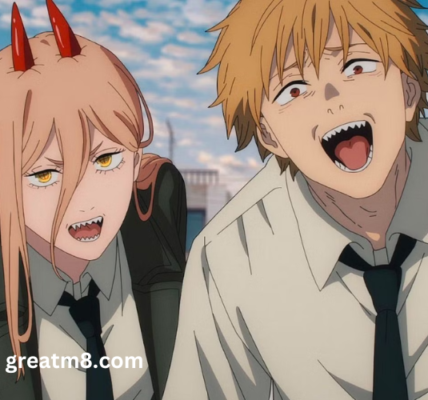Japanese anime, a unique and vibrant form of animation originating from Japan, has transcended its geographic and cultural boundaries to become a global phenomenon. Its distinctive art style, complex narratives, and rich cultural references have captured the imagination of audiences worldwide. This article delves into the cultural significance and global impact of Japanese anime, exploring its historical roots, thematic diversity, cultural export, and the ways it has influenced and been influenced by other cultures.
Historical Roots and Evolution
Anime, as a term, is derived from the English word “animation,” but in Japan, it encompasses all forms of animated media. The roots of anime can be traced back to the early 20th century, with the first known anime, “Namakura Gatana,” created in 1917. However, it was post-World War II Japan that saw the emergence of anime as a significant cultural force. Pioneering creators like Osamu Tezuka, often referred to as the “God of Manga,” played a crucial role in shaping the modern anime industry. Tezuka’s 1963 work, “Astro Boy,” was instrumental in establishing the stylistic and thematic conventions that would define anime.
The 1970s and 1980s marked a golden era for anime, with the rise of genres such as mecha (giant robots), space opera, and fantasy. Iconic series like “Mobile Suit Gundam” and “Space Battleship Yamato” set the stage for complex storytelling and character development. The 1990s brought anime to a global audience with the success of series like “Dragon Ball Z,” “Sailor Moon,” and the critically acclaimed film “Akira.” This period also saw the emergence of Studio Ghibli, whose films like “My Neighbor Totoro” and “Spirited Away” achieved both commercial success and critical acclaim.
Thematic Diversity and Cultural Reflections
One of the defining features of anime is its thematic diversity. Unlike Western animation, which has often been geared towards children, anime caters to a wide range of audiences, including adults. This allows for a vast array of genres and themes, from action and adventure to romance, horror, science fiction, and slice of life.
Anime often reflects Japanese cultural values, social issues, and historical events. For instance, “Grave of the Fireflies,” a poignant film by Studio Ghibli, depicts the harrowing experiences of two siblings during World War II, providing a sobering reflection on the impact of war on civilians. Similarly, “Neon Genesis Evangelion,” a complex and introspective series, delves into themes of existentialism, psychology, and the human condition, while also incorporating religious and philosophical symbolism.
Moreover, anime frequently explores futuristic and dystopian themes, as seen in series like “Ghost in the Shell” and “Cowboy Bebop.” These works not only entertain but also provoke thought about the implications of technology, identity, and society’s trajectory. The genre of shōnen (targeted at young males) and shōjo (targeted at young females) further illustrate the breadth of anime’s appeal, with series like “Naruto” and “Cardcaptor Sakura” becoming cultural touchstones for their respective demographics.
Cultural Export and Global Reach
The global impact of anime can be attributed to several factors, including its accessibility, universal themes, and the efforts of dedicated fan communities. The advent of the internet and digital streaming platforms has played a significant role in making anime accessible to a global audience. Platforms like Crunchyroll, Funimation, and Netflix offer extensive libraries of anime, often with subtitles and dubbing in multiple languages.
Anime conventions, such as Anime Expo in the United States and Japan Expo in France, have further cemented anime’s presence on the global stage. These events attract thousands of fans and feature screenings, panels, and merchandise, creating a vibrant community and fostering cross-cultural exchange.
The influence of anime extends beyond entertainment, permeating various aspects of global culture. Fashion, music, and even language have been impacted by anime. The “Harajuku” fashion style, popularized by anime and manga, has inspired global fashion trends. Japanese pop music (J-pop) and anime soundtracks have also gained international popularity, with artists like Hikaru Utada and bands like L’Arc-en-Ciel achieving global recognition.
Anime’s Influence on Other Cultures and Media
The global impact of anime is evident in its influence on other forms of media and entertainment. Western animation and film have drawn inspiration from anime’s unique storytelling and visual style. Notable examples include “The Matrix” series, which was heavily influenced by anime classics like “Ghost in the Shell” and “Akira,” and the animated series “Avatar: The Last Airbender,” which incorporates anime-style artwork and storytelling techniques.
Moreover, the collaborative projects between Japanese and Western creators have led to innovative works that blend cultural influences. “The Animatrix,” a collection of animated short films set in the Matrix universe, features contributions from renowned Japanese animators. Similarly, Netflix’s “Castlevania” series, while based on a Japanese video game, incorporates a distinct anime aesthetic and storytelling style.
The impact of anime is also evident in the world of video games, with Japanese franchises like “Final Fantasy,” “Pokémon,” and “Legend of Zelda” achieving massive global success. These games often feature anime-inspired art and narratives, further blurring the lines between different forms of media.
Societal and Educational Impact
Beyond entertainment, anime has also made significant contributions to education and societal awareness. Educational anime, such as “Cells at Work!,” which personifies human cells to explain biological processes, have been praised for their informative and engaging approach. Historical anime, like “The Wind Rises” by Hayao Miyazaki, offers insights into significant events and figures in Japanese history.
Furthermore, anime has played a role in raising awareness about social issues. Series like “A Silent Voice” tackles sensitive topics such as bullying and disability, fostering empathy and understanding among viewers. The representation of diverse characters and themes in anime has also contributed to discussions about identity, gender, and sexuality, providing a platform for marginalized voices.
Challenges and Criticisms
Despite its global popularity, anime is not without its challenges and criticisms. Issues such as overwork and exploitation within the anime industry have garnered attention. Animators often face long hours and low pay, raising concerns about the sustainability of the industry. Efforts are being made to address these issues, with initiatives aimed at improving working conditions and promoting fair labor practices.
Moreover, anime has sometimes been criticized for its portrayal of gender and sexualization. While some series offer progressive representations, others have been accused of perpetuating harmful stereotypes. The depiction of violence and mature themes in certain anime has also sparked debates about censorship and age-appropriate content.
The Future of Anime
The future of anime looks promising, with continued growth and innovation on the horizon. Technological advancements, such as virtual reality and augmented reality, offer new possibilities for immersive storytelling. Collaborative projects between Japanese and international creators are likely to increase, fostering cross-cultural creativity and expanding the global reach of anime.
Moreover, the diversification of anime genres and themes will continue to attract a broader audience. As anime increasingly reflects global issues and perspectives, it has the potential to serve as a powerful medium for cultural exchange and understanding.
Conclusion
Japanese anime, with its rich cultural heritage and global impact, has become a significant cultural force that transcends boundaries. Its historical evolution, thematic diversity, and ability to resonate with audiences worldwide underscore its enduring appeal. As anime continues to influence and be influenced by other cultures, it stands as a testament to the power of storytelling and artistic expression. The future of anime promises further growth and innovation, ensuring its place as a beloved and influential part of global culture for generations to come.









